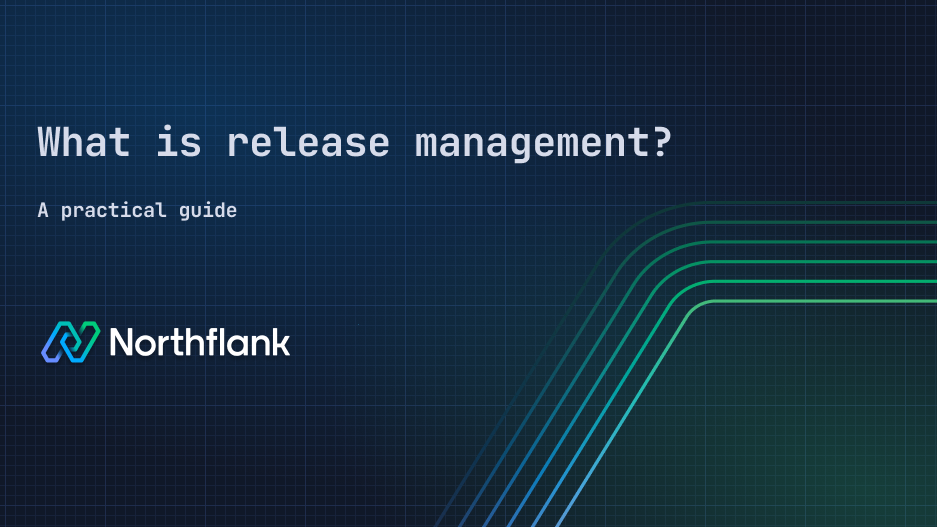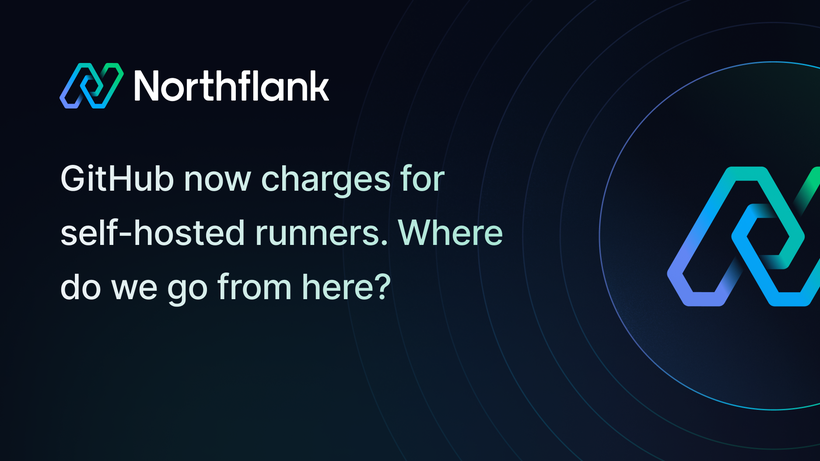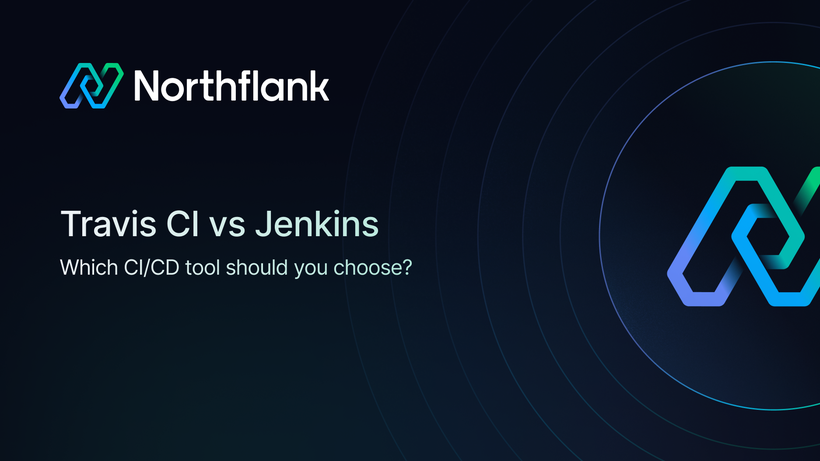

What is release management? A practical guide (with fewer acronyms and more advice)
If you've ever had a Friday deployment go sideways and spent your weekend untangling a postmortem doc longer than your last vacation itinerary, congratulations: you've experienced the joys of release management.
For those who haven't, imagine trying to coordinate a multi-team product launch across different environments, with last-minute hotfixes flying in like rogue fireworks, and a noisy Slack channel in the background.
Release management is what keeps all of that from spiraling into chaos.
In this guide, we’re going to answer two things:
- What is release management, really?
- What makes good release management tools worth the trouble?
We’ll also show how platforms like Northflank are making this easier for developers
- Release management is how you plan, coordinate, and ship software without chaos.
- It covers CI/CD, environment consistency, deployment strategies, observability, and rollbacks.
- As systems scale, the risk of broken deploys, slow rollouts, and confused teams grows.
- You can reduce risk by shipping smaller changes more often, standardizing environments, and automating everything, especially rollbacks.
- The right tools make all the difference. Northflank unifies CI/CD, environment management, and release orchestration into one resilient, developer-friendly platform.

Release management is the process of planning, scheduling, coordinating, and deploying software releases. It covers everything from preparing builds to rolling them out into production. The goal is simple: ship new code fast, without breaking things.
In practice, it’s a lot messier. Releases are often complex, involving:
- Coordinating across engineering, QA, product, and DevOps
- Managing multiple environments (dev, staging, prod)
Wondering what those are? There’s also a guide for that here.
- Dealing with compliance, approvals, and rollback plans
- Ensuring monitoring, alerting, and observability are in place
Done well, release management increases deployment frequency, reduces the risk of incidents, and improves developer productivity. Done poorly, it becomes a bottleneck, or worse, a source of outages.
In the old days (read: 2000s), release management meant scheduled releases every few months, with enormous spreadsheets, fragile Jenkins jobs, and anxiety-inducing deployment windows.
Then came agile. CI/CD. Microservices. "Move fast and break things."
Now teams are expected to ship multiple times a day. With distributed systems and dozens of environments, keeping releases safe, fast, and understandable has become an existential challenge.
That’s why the release management space (and the tools built for it) have had to evolve
Release management starts with your source control and CI pipelines. You can’t release what you haven’t built. Tools like GitHub Actions, CircleCI, or GitLab CI help automate builds, run tests, and ensure each commit doesn’t blow up the app.
You need a way to store and version your build outputs: container images, binaries, whatever your system runs on. Artifact registries (like ECR or JFrog) help here. This part is usually underappreciated until something breaks in production and you can't roll back because no one saved the last working image.

You can’t just deploy to production. You’re testing in staging, running experiments in dev, and probably have a pre-prod ghost town someone forgot about. Managing consistent environments, with the same configs, secrets, and deployment logic, is critical. This is also where things start to break at scale.
This is the heart of it: defining what gets released, where, and when. Do you use feature flags? Progressive delivery? Blue/green or canary deployments? A solid orchestration layer lets you model this and run it safely, and ideally, not manually.

You shipped. Now what?
Good release management includes observability: metrics, logs, traces, alerts. And rollback strategies that aren’t “call Steve, he knows where the script is.”

Because software gets complicated. Especially when:
- You’re running a microservices architecture
- Different teams own different parts of the system
- Compliance and audit trails are required
- Your CI/CD process is duct-taped together with bash scripts
Release management no longer means just pushing code. You have to manage complexity and risk in a world where everything is distributed, and expectations are high.
Release management isn’t supposed to be thrilling, it’s supposed to be reliable.
If it does, something’s wrong… and fixable. Here’s how teams can make release management less chaotic and more routine
Embrace smaller, more frequent releases
Deploying massive chunks of code once a quarter is asking for pain. Smaller, more frequent releases reduce the blast radius when something goes wrong and help teams build confidence in the process. It also gives you more opportunities to validate in production.
Standardize environments and configs
Use infrastructure as code and treat environment setup as a first-class citizen. Everything should be versioned, repeatable, and consistent.
Automate everything you can
Manual steps are where things break. Automate builds, tests, deploys, rollbacks, and health checks. The less you have to remember or document, the less you’ll forget. Bonus: it makes onboarding easier, too.
Add observability to every stage
Shipping blindly is reckless. Add monitoring, logging, and tracing at every stage of the release pipeline, not just in prod. That way, when something goes wrong, you’re not stuck guessing or grepping through logs from six different services.
Don’t wait for a crisis to test your rollbacks
If your rollback plan only exists in theory, it’s not a real plan. Test it. Practice it. Make sure it works even when Steve is on PTO.
Share the load AND the knowledge
Release management shouldn’t live in one person’s head. Document the process, share context across teams, and make sure there are backups. You want a system that survives vacation schedules and surprise outages.
Use the right release management tools
You can follow all the best practices in the world, but if your tools fight you at every step, you’re still in for a rough time. The best thing you can do for your team is to use a platform that treats release management as a first-class concern.
That’s where tools like Northflank come in. It combines CI/CD, environment management, and release orchestration into one platform, so you don’t have to stitch it all together yourself. You get built-in support for blue/green and canary deployments, visibility across environments, and safety features like automated rollbacks and health checks.
The result: a team that doesn’t dread release day.
There are a million release management tools out there. The best ones do the following:
✅ Unify the deployment process
Great tools give you a clear, centralized view of what’s being deployed, where, and by whom. They remove ambiguity.
✅ Support flexible release strategies
Blue/green, canary, feature flags, A/B testing, you should be able to define and control your rollout strategy without writing custom scripts every time.
✅ Treat environments the right way
Managing infrastructure shouldn’t be a separate concern. The best release management tools integrate environment provisioning and configuration directly into the release process.
✅ Automate rollbacks and health checks
You need to ship fast AND safe. Smart automation should handle health checks and roll back automatically when something breaks.
✅ Work for both platform engineers and developers
If it only makes the life of one team easier, it’s not a real solution. A good release tool is intuitive for developers and powerful for platform teams.
Northflank wasn’t built to be a CI/CD tool.
CI/CD is just one piece of the puzzle, and Northflank goes far beyond it. It’s a full workload delivery platform, designed to meet the reality of how modern teams ship software today.
Instead of stitching together a fragile mix of CI tools, environment scripts, deployment templates, and homegrown dashboards, Northflank gives you a single, unified platform that just works.
Every step of your release process, from builds to environments to rollout strategies, lives in one place and speaks the same language.
You get:
- CI/CD pipelines integrated with deployment environments, not bolted on
- Environment configurations that stay consistent across staging, production, and everything in between
- Progressive delivery strategies baked in: blue/green, canary, manual gates
- Clear visibility into what’s shipping, where, and by whom
- Audit logs, observability, and safety nets built into the core, not as afterthoughts
Northflank was built with care, for teams who want to move fast, but refuse to compromise on quality. It's engineered to be resilient under pressure, clear in its intent, and easy to trust.
Release management is what separates teams who ship with confidence from teams who ship and hope.
The right process, backed by the right tooling, can turn shipping from a fire drill into a boring, predictable habit. And boring is good when it comes to production.
So the next time someone asks, "What is release management?" you can tell them:
"It’s how we ship fast, stay sane, and stop waking up to PagerDuty alerts. Also, we use Northflank."



